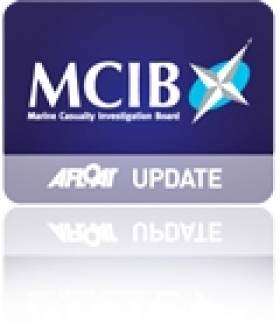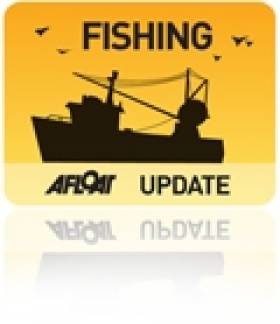Displaying items by tag: amy jane
Bilge Alarms Recommended for Fishing Vessels - MCIB
#MCIB - Bilge alarms in compartments below the water line have been recommended for fishing vessels in the official report into the sinking of the FV Amy Jane off Donegal last year.
As previously reported on Afloat.ie, the six-man crew of the crabber were rescued by coastguard helicopter some 13 miles off Malin Head on the morning of 7 October 2011 after the boat began taking on water overnight.
The vessel had left Greencastle Harbour in the early hours headed out to haul pots from the crab grounds off Malin Head when the crew discovered that the boat was down by the head. The pot store was found to be full of water, and attempts to pump it out made little difference.
The alarm was raised via radio with Malin Head Coast Guard before 9am and Irish Coast Guard helicopter Rescue 118 was tasked to the scene, lifting all six crew from the stricken vessel by 10.30am.
The report by the Marine Casualty Investigation Board (MCIB) found that corrosion within the Vivier tank system - used to preserve the boat's catch - was the likely source of the breach that led to the vessel taking on water.
Though an unusual thump or bump was noticed by the skipper on watch around 3am, nothing obvious was discovered, and neither the listing at the boat's head nor the flooding of the pot store - which had no bilge alarm - were noticed till after sunrise.
Aside from recommending the installation of bilge alarms for all compartments below the water line on fishing vessels, the report also called for consideration to include survey guidelines for Vivier systems, which are exposed to the same environment as the hull.
The full report on the Amy Jane incident is available to download via the link below.
Crew Rescued from Sinking Fishing Boat off Donegal
The Irish registered 'Amy Jane' fishing vessel began taking in water about 13 miles off Malin Head this morning and was evacuated at 0945. The crew took to liferafts before being rescued. More details as we have it.
More from HM Coastguard
At 09.45am, Belfast Coastguard received a mayday call from a fishing vessel reporting that they were taking water and sinking.
The six crew of the fishing vessel took to their liferaft, dressed in their survival suits and took with them their EPIRB (Emergency Position Indicating Radio Beacon) which they had activated and a handheld VHF Radio.
Belfast Coastguard working with Malin Head Coastguard who had direct communications with the liferaft initiated a search and rescue mission to rescue the men.
The Irish Coastguard helicopter Rescue 118 based at Sligo was requested and was the Coastguard Helicopter Rescue 100 based at Stornoway.
The RNLI lifeboats from Portrush and Lough Swilly were also requested to launch.
The fishing Amy Jane SO876 registered in Sligo was 13 miles north of Malin Head when it made the mayday call.
The weather was reported as being North Westerly, Force 6 with a moderate swell.
Coleraine Coastguard rescue team are at City of Derry airport to receive the survivors.
Steve Carson, Watch Manager, Belfast Coastguard said:
We are pleased that this has been a successful rescue of six fishermen.
Sea Survival training which is undertaken by crew of fishing vessels and being properly equipped is a key factor in the rescue of these six men today.
























